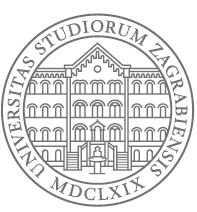| Abstract | Razvojni poremećaj kuka komplicirani je multifaktorijalan poremećaj koji se pojavljuje u novorođenčadi i dojenčadi, a rizičnih faktora ima pregršt. Na pojavu ove bolesti utječu različiti čimbenici poput pripadnosti etničkim skupinama, genetske predispozicije te okolišni čimbenici. Pravovremenom primjenom ortoza za konzervativno abdukcijsko liječenje kuka (poput Pavlikovih remenčića, abdukcijskih gaća, von Rosen ortoza i Tübingen ortoza) moguće je otkloniti anomalije u zglobu kuka i djeci osigurati zdravu budućnost.
Cilj ovog diplomskog rada je izrada idejnog unaprjeđenja ortoze za abdukcijsko liječenje koja će pružati bolja, sigurnija i jednostavnija korisnička iskustva.
U teorijskom dijelu rada razrađene su tematike anatomije, biomehanike i razvoja zgloba kuka. Nakon toga slijedi upoznavanje s bolesti razvojnog poremećaja kuka, gdje se osim osvrta na samu bolest raspravlja o načinima postavljanja dijagnoze, epidemiologiji i demografiji u svijetu i u Republici Hrvatskoj, liječenju te potencijalnim komplikacijama tijekom nošenja ortoze. Izrađen je pregled postojećih rješenja na tržištu, koja su se ocjenjivala prema svojstvenim karakteristikama koje posjeduju. Na temelju ovih spoznaja i ankete upućene roditeljima djece koja su nosila ortoze kuka napravljen je tehnički upitnik, definicija cilja te su izdvojene vodilje bitne za lansiranje proizvoda na tržište. Izdvojeni su funkcionalni i konstrukcijski zahtjevi koji su bili temelj za vrednovanje tri koncepta generiranih u fazi koncipiranja. Na koncu ovog rada istaknuti je koncept razrađen u programskom paketu SolidWorks te je raspravljena njegova funkcionalnost uz istaknute prednosti i poboljšanja u odnosu na postojeća rješenja na tržištu.
Rezultat ovog rada jest prikaz mogućnosti za poboljšanje glede anatomske prilagodljivosti, jednostavnosti i sigurnosti. Do sada ne postoji takav pristup ortozama kuka te bi bilo potrebno proizvesti prototip čijim korištenjem bi se mogla utvrditi povratna informacija od korisnika, što bi u konačnici dokazivalo funkcionalnost ortoze i ukazivalo na mogućnosti za dodatna poboljšanja. |
| Abstract (english) | Developmental dysplasia of the hip is a complicated multifactorial disorder that appears in newborns and infant and for which are many risk factors. The appearance of this disease is influenced by various factors such as belonging to ethnic groups, genetic predisposition and environmental factors. With the well-timed application of orthosis for conservative hip abduction treatment (such as Pavlik harness, abduction panties, von Rosen and Tübingen orthosis) it is possible to eliminate anomalies in the hip joint and provide a healthy future for children.
The aim of this master thesis is to create a conceptual improvement of the orthosis for abduction treatment that will provide better, safer and simpler user experiences.
In the theoretical part of this paper, the topics of anatomy, biomechanics and development of the hip joint are elaborated. This is followed by an introduction to the developmental dysplasia of the hip where, in addition to looking at the disease itself, the methods of diagnosis, epidemiology and demography in the world and in the Republic of Croatia, its treatment and potential complications while wearing an orthosis are discussed. An overview of the solutions on the market was processed, which were then evaluated according to their inherent characteristics. Based on these findings and a survey addressed to the parents of children who wore a hip orthosis; a technical questionnaire, the definition of the goal and the extracted guidelines essential for the launch of the product on the market were created. The functional and structural requirements were singled out, and those were the basis for the evaluation of the three concepts generated in the conceptual phase. At the end of this paper, the winner concpet is developed in the software SolidWorks and its functionality is discussed, among with highlighted advantages and improvements compared to existing solutions on the market.
The result of this thesis is a presentation of the possibilities for improvement in terms of anatomical adaptation, simplicity and safety. Until now, there is no such approach to hip orthosis and it would be necessary to design a prototype which, when used could provide a direct information feedback from its users, so that proves functionality of the othosis and showcase any possibility for further improvements. |


